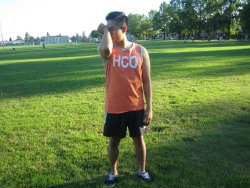
Rosacea is a condition of the skin characterized by chronic inflammation. The cause for rosacea is not known and there is no permanent cure. Rosacea is also known as adult acne. There are four different type of rosacea namely: Red face rosacea, Papulopustular rosacea, Rhinophyma and Ocular Rosacea.
Who’s At Risk?
The group of people who are most affected by rosacea are individuals between the age of 30 and 60. It is seen that it is common in women and in fair skinned individuals. However, dark-skinned people are also known to be affected by it. In the United States, 14 million Americans are affected by Rosacea. It can come and go periodically or it can get worse with time.
There are certain factors that trigger rosacea in susceptible individuals. Some of the factors are sunlight, hot drinks, alcohol, exercise, saunas, hot bath, extreme temperatures, etc. Excessive and prolonged use of cortisone cream on the face can lead to rosacea as well. Use of some drugs like nasal steroids, amiodarone, nasal steroids, etc., are also known to increase flushing.
Signs and Symptoms:
The symptoms for various types of rosacea is listed below.
Red face rosacea is characterized by reddening and flushing of the face and nose. The reddening can also progress to the central face.
Papulopustular rosacea is characterized by pus filled acne like lesions on the face. There may or may not be a red flushing of the skin.
Rhinophyma is marked by slow enlargement of oil glands and thickening of the skin of the nose and some other facial area. It usually occurs in men.
Ocular rosacea is characterized by a burning and gritty feeling in the eye. It can be accompanied by reddening of the eye and the eyelids.
Depending on the characteristics, rosacea can also categorized as mild, moderate and severe.
In Mild rosacea there is occasional blushing or some pimples. In the moderate stage, there would be frequent blushing, persistent reddening of the face and the presence of pimple on the face at any time.
Severe rosacea is characterized by a large number of pimples, bumps, large bulbous nose and appearance of lots of blood vessels on the face.
Self-Care Guidelines
By practicing the following self-care guidelines, one can minimize the occurrence of flare ups.
– Factors that trigger skin flushing may vary from person to person. Try and identify the factors and minimize exposure to those triggers.
– Avoid harsh sun rays and when in sun always use a broad spectrum sunscreen lotion to protect your skin.
– Avoid hot drinks, alcohol, spicy food, extreme temperatures and any other factor that causes flare ups.
– During the winter protect your face with a scarf or mask.
– Avoid wearing too much makeup. Avoid any skin product that irritates the skin.
When to Seek Medical Care
If you experience episodes of frequent flushing or find acne like bumps developing on your skin, seek medical help.
Your doctor may prescribe you topical creams such as metronidazole, erythromycin, sulfur, benzoyl peroxide, etc. In more serious cases, oral antibiotics can also be prescribed. In severe cases surgical treatment like electrocautery or laser can also be helpful in reducing the appearance of visible blood vessels.
There is no permanent cure for rosacea. Hence, it is important to avoid the triggers to minimize the chances of the occurrence of rosacea.
